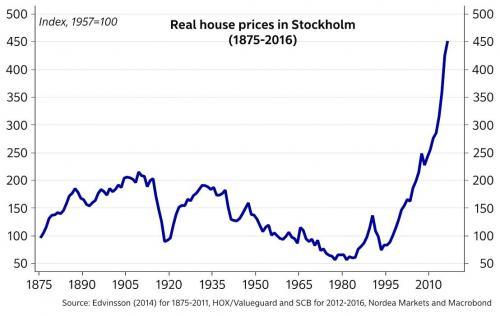Steve Bull's Blog, page 1229
December 16, 2017
Emergency SHTF Packing: How To Efficiently Pack a Bug-Out Bag
 This article is a continuation and the second part of the load management series written at the request of Mr. Brent Westbrook, a ReadyNutrition Reader. In the first part, we covered how to stagger a load by weight and pack it according to function for a vehicle. Guess what? Many of the basics used to emplace that load are followed here, in how to pack a rucksack (another word for a backpack). Let’s get right down to it!
This article is a continuation and the second part of the load management series written at the request of Mr. Brent Westbrook, a ReadyNutrition Reader. In the first part, we covered how to stagger a load by weight and pack it according to function for a vehicle. Guess what? Many of the basics used to emplace that load are followed here, in how to pack a rucksack (another word for a backpack). Let’s get right down to it!
Packing a Bug-Out Bag + Gear Suggestions
For those who have been reading my articles for a while, you know that my personal preference is the large-frame Army Rucksack (also called a Large “Alice” pack) …the one from the turn of the century and thirty years before. It has an aluminum frame, it’s made of nylon, and it can take a lot of punishment. That being said, the mechanics and reasoning for packing it are still the same.
You must ensure with a ruck that the load is balanced, as high as possible to keep pressure and weight off your back and that you can get to your equipment in a hurry.
Items on the bottom are those rarely used
I pack at the bottom of mine stuff that I do not intend to use at all or very seldom, such as extra clothes and extra food. Pack your clothes in a wet-weather bag ( the military issue is preferable to me, although I’m aware there are many civilian firms that follow the premise of waterproof bags). In the middle of the ruck, you want some ammo, more clothes, and some specialty equipment that doesn’t see immediate use. You be the judge of that. Toward the top, I keep Gore-Tex pants and jacket, as well as an issue sleeping bag with a Gore-Tex cover in a compression bag and then in a wet-weather bag.
…click on the above link to read the rest of the article…
The Greek Fraud Reads Like a Crime Novel

Tamara de Lempicka The refugees 1937Note: I feel kind of sorry this has become such a long essay. But I still left out so much. You know by now I care a lot about Greece, and it’s high time for another look, and another update, and another chance for people to understand what is happening to the country, and why. To understand that hardly any of it is because the Greeks had so much debt and all of that narrative.
The truth is, Greece was set up to be a patsy for the failure of Europe’s financial system, and is now being groomed simultaneously as a tourist attraction to benefit foreign investors who buy Greek assets for pennies on the dollar, and as an internment camp for refugees and migrants that Europe’s ‘leaders’ view as a threat to their political careers more than anything else.
I would almost say: here we go again, but in reality we never stopped going. It’s just that Greece’s 15 minutes of fame may be long gone, but its ordeal is far from over. If you read through this, you will understand why that is. The EU is deliberately, and without any economic justification, destroying one of its own member states, destroying its entire economy.
 A short article in Greek paper Kathimerini last week detailed the latest new cuts in pensions the Troika has imposed on Greece, and it’s now getting beyond absurd. For an economy to function, you need people spending money. That is what keeps jobs alive, jobs which pay people the money they need to spend on their basic necessities. If you don’t do at least that, there’ll be ever fewer jobs, and/or ever less money to spend. It’s a vicious cycle.
A short article in Greek paper Kathimerini last week detailed the latest new cuts in pensions the Troika has imposed on Greece, and it’s now getting beyond absurd. For an economy to function, you need people spending money. That is what keeps jobs alive, jobs which pay people the money they need to spend on their basic necessities. If you don’t do at least that, there’ll be ever fewer jobs, and/or ever less money to spend. It’s a vicious cycle.
…click on the above link to read the rest of the article…
How to deal with doom burnout
 In the intro to a recent post on TBP, admin said the following:
In the intro to a recent post on TBP, admin said the following:
I love Denninger’s ability to be outraged day after day and his continuous rage against the machine. I’ve lost that fire. After nine years of this, I’m burnt out. I no longer have that passion driving me. What will be will be.
I think that burnout is something a lot of us feel – we find out what’s going on in the world, get outraged, and then gradually realize that we’re like old men yelling at clouds – all of our indignant anger isn’t worth shit and it isn’t going to change shit. We slowly burn out, realizing that the world is simply unjust and there’s not a damn thing we can do about it.
That sentiment is echoed in the comments of many posts on TBP, ZeroHedge and other similar sites – “We KNOW everything is fucked up, what do we DO about it!”
So let’s have that discussion – what DO we do about it? Because the reality is that people can change things, it happens all the time. But it’s not going to happen commiserating with like minds on an internet forum. So how do we cause change?
Here are my thoughts:
Develop a vision. Anyone can bitch about how things are. But unless you know what they should look like instead, there’s no way to incite change. People need a target – they need to know what they’re working towards. Just saying that things are bad now doesn’t give anyone any actionable information.
Get out of the echo chamber. There’s great comfort in commiserating with fellow red-pills, but hiding away in our doom fortress isn’t going to change anything. If there’s going to be change we need a much larger movement, which means going out and preaching to the unconverted.
…click on the above link to read the rest of the article…
The U.S. is Not a Democracy, It Never Was

Photo by Daniel Huizinga | CC BY 2.0
One of the most steadfast beliefs regarding the United States is that it is a democracy. Whenever this conviction waivers slightly, it is almost always to point out detrimental exceptions to core American values or foundational principles. For instance, aspiring critics frequently bemoan a “loss of democracy” due to the election of clownish autocrats, draconian measures on the part of the state, the revelation of extraordinary malfeasance or corruption, deadly foreign interventions, or other such activities that are considered undemocratic exceptions. The same is true for those whose critical framework consists in always juxtaposing the actions of the U.S. government to its founding principles, highlighting the contradiction between the two and clearly placing hope in its potential resolution.
The problem, however, is that there is no contradiction or supposed loss of democracy because the United States simply never was one. This is a difficult reality for many people to confront, and they are likely more inclined to immediately dismiss such a claim as preposterous rather than take the time to scrutinize the material historical record in order to see for themselves. Such a dismissive reaction is due in large part to what is perhaps the most successful public relations campaign in modern history. What will be seen, however, if this record is soberly and methodically inspected, is that a country founded on elite, colonial rule based on the power of wealth—a plutocratic colonial oligarchy, in short—has succeeded not only in buying the label of “democracy” to market itself to the masses, but in having its citizenry, and many others, so socially and psychologically invested in its nationalist origin myth that they refuse to hear lucid and well-documented arguments to the contrary.
…click on the above link to read the rest of the article…
December 15, 2017
Chinese Navy Begins Live-Fire Drills Off Korean Peninsula
Earlier this week, Seoul asked the US to delay joint military exercises with Japan until after the Winter Olympics, ostensibly to avoid provoking North Korea ahead of the 2018 Winter Games. The timing of the request is suspicious – having coincided with Secretary of State Rex Tillerson’s announcement that the US has offered to begin talks with the North “without preconditions.” While State Department spokesperson Heather Nauert walked back Tillerson’s statement the next day, insisting the North cease its weapons tests before talks can proceed, it is possible such a delay – if undertaken – could be construed as an opening gambit.
US drills in the region have stopped, though it’s unclear whether the US will abide by South Korea’s request. However, the brief lull in the area was interrupted Thursday when local media reported that China has decided to hold military drills of its own.
According to the South China Morning Post, China is now conducting a live-fire exercise off the North Korean peninsula, and is expected to last for four days. In addition to citing security concerns, Beijing also criticized the US for pushing the region toward nuclear war.
The drill in the Bohai Sea started on Thursday afternoon and will last until 4 pm local time next Monday, according to a notice issued by the Liaoning Maritime Safety Administration.
Beijing cordoned off an area of some 276 square kilometers near Lushun in Liaoning province, an important naval base for the People’s Liberation Army’s North Sea Fleet, which is responsible for defending the Bohai and Yellow Seas off the Korean peninsula.
…click on the above link to read the rest of the article…
Surveying the Damage of Low Interest Rates
 Peter Macdiarmid/Getty Images
Peter Macdiarmid/Getty Images
Surveying the Damage of Low Interest Rates
Few would disagree that it was necessary to slash interest rates in the immediate aftermath of the 2008 global financial crisis. But after a decade of ultra-loose monetary policies across advanced economies, growth remains tepid, financial risks have proliferated, and middle-class savers have lost out.
WASHINGTON, DC – For years after the 2008 financial crisis, policymakers congratulated themselves for having averted a second Great Depression. They had responded to the global recession with the kind of Keynesian fiscal and monetary stimulus that the moment required.
But nine years have passed, and official interest rates are still hovering around zero, while growth has been mediocre. Since 2008, the European Union has grown at a dismal average annual rate of just 0.9%.
The broad Keynesian consensus that emerged immediately after the crisis has become today’s prevailing economic dogma: as long as growth remains substandard and annual inflation remains below 2%, more stimulus is deemed not just appropriate, but necessary.
The arguments underlying this dogma do not hold water. For starters, measures of inflation are so poor as to be arbitrary. As Harvard’s Martin Feldstein notes, governments have no good way to measure price inflation for services and new technologies, which account for an ever greater share of advanced economies’ GDP, because quality in these sectors varies substantially over time. Moreover, real estate and other assets are not even included in the accounting.
The dictate that inflation must rise at an annual rate of 2% is also arbitrary. Swedish economist Knut Wicksell’s century-old concept of a “natural” interest rate – at which real (inflation-adjusted) GDP growth follows a long-term average while inflation remains stable – makes sense. But why should the inflation rate always be 2%? And why aren’t services, new technologies, or, say, Chinese manufactured goods excluded from the measure of core inflation, alongside energy and food?
…click on the above link to read the rest of the article…
VIDEO: What Everyday Life Is Like in Puerto Rico Now
In Puerto Rico, everything has changed since Hurricane Maria struck nearly 3 months ago.
Many people have no running water. And if they do, it can’t be consumed without boiling.
There’s no electricity in many regions.
Supplies are scarce.
I’ve written about the SHTF aftermath in Puerto Rico, both the day after the storm, a week after, and a couple of months later. But while there is a lot of good information in all those articles, it’s just words on a page.
The video below brings it to life. This is what life looks like for people who have just watched everything be turned upside down by Mother Nature.
America’s painful self-delusion
America’s painful self-delusion
 America is the only nation brought forth by a set of beliefs, and those beliefs, captured so eloquently in our founding documents, are some of the most powerful and inspiring ever conceived. We consider this to be the land of the free, where the individual is supreme and nothing prevents us from going as far as our talents can take us. That image of America – that “brand” – is incredibly strong.
America is the only nation brought forth by a set of beliefs, and those beliefs, captured so eloquently in our founding documents, are some of the most powerful and inspiring ever conceived. We consider this to be the land of the free, where the individual is supreme and nothing prevents us from going as far as our talents can take us. That image of America – that “brand” – is incredibly strong.
However, there’s a very large gap between that long-held image and the reality of America today. What was once a government built for the people is now a government run for the rich and powerful, one that throws the people under the bus whenever their interests differ from those of the corporate and political leaders who run the show.
And living in one world (the corrupt) while stubbornly believing you live in another (the ideal), despite mounds of evidence, causes a distinct kind of stress, often called cognitive dissonance.
Psychologists suggest that when people are in a state of cognitive dissonance, they’ll search for a way to resolve it, either by rejecting one view or the other as either wrong or unimportant. If you’re a smoker looking at the link between smoking and cancer, for example, you’ll either quit smoking or decide that the research is biased, wrong, or doesn’t apply (in other words, that you’re smart enough to quit before the long-term damage is done).
But what happens if you can’t resolve the two?
For most of us Americans, resolving our cognitive dissonance would mean either accepting that we’re impotent and living futile (and feudal) lives, or rejecting our lifestyles and actively fighting the rot in the system. If we’re not willing to do either of those, the dissonance stays – and eats at us.
…click on the above link to read the rest of the article…
The Separatist Movements in Canada & One-Size-Fits-All of Marx
Many people are aware of the various attempts of Quebec to separate from Canada. What they are unaware of is the supporters of the Western Independence Party of Alberta. There has been an undertone of the separatist movement in Alberta which actually stems from the Great Depression usurpation of the Federal Reserve by Franklin D. Roosevelt.
Why is the Western Canada separatist movement caused by Roosevelt’s usurpation of the Federal Reserve? Everyone looks to the United States and assumes whatever structure they adopt must be correct. The Euro was crafted because the USA has a single currency. They did not consolidate all the debts and that has created a nightmare. Canada, likewise, assumed the one-size-fits-all policy of Roosevelt and has been paying the price regionally ever since.
So what is the link with the structural usurpation of the Federal Reserve?
When the Fed was created, it was the solution to the Panic of 1907, which was set in motion by the disruption of the internal domestic capital flows caused by the San Francisco earthquake of 1906. The insurance companies were in New York. Consequently, the cash flowed to the West and a shortage developed in the East.
The original structural design of the Fed was to establish 12 branches to manage the capital flows domestically. Interest rates would decline where there was an excess of cash and rise where there was a shortage. This, they believed, would cause capital to move between the branches to balance the national capital flows and economy. Each branch acted independently to manage the capital flows. When crops would come to market, then Kansas would have an excess of cash and rates would decline as we can see from the table showing the rates set by each branch in August 1927.
…click on the above link to read the rest of the article…
Swedish Housing Bubble Pops As Stockholm Apartment Prices Crash Most Since June 2009
Even though Sweden’s property bubble is not the longest running (that accolade goes to Australia at 55 years), it is probably the world’s biggest with prices up roughly 6-fold since starting its meteoric rise in 1995.
Of course, as we noted last month when the SEB’s housing price indicator, which measures the difference between those who believe prices will rise and those who expect them to drop, took its first substantial tumble, the era of the steadily inflating housing bubble in Stockholm may finally have come to an end.
Now, it seems that the “hard data” is aligning with the “soft data” as Swedish home prices across the Nordic country posted their first decline since the spring of 2012, down 0.2% year-over-year and 2.9% sequentially. Per Bloomberg:
The property market in the largest Nordic economy is rapidly cooling after years of price increases that were driven largely by housing shortages and ultra-low interest rates. Supply is now outstripping demand and stricter mortgage rules, as well as growing apprehension among households, are driving prices lower. The drop is being led by high-end apartments in Stockholm.
According to Maklarstatistik’s number, nationwide apartment prices fell a monthly 3 percent in November, adding to October’s 1 percent drop. House prices fell 1 percent in the month, after being unchanged in October. Apartment prices in greater Stockholm fell 3 percent in the month and were down 4 percent from a year earlier, the first such decline in almost six years.
Worse yet, the slump in Stockholm specifically is even more dramatic with apartment prices down 4.2% sequentially, the steepest since October 2008, and 6.0% year-over-year, the biggest June 2009.
…click on the above link to read the rest of the article…











